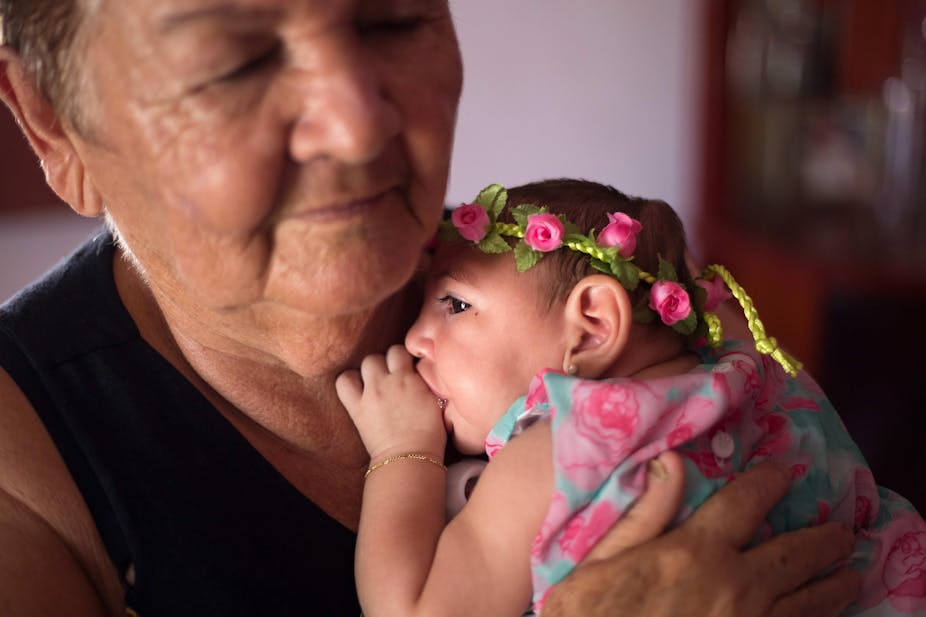I recently sat with a mother and her baby in an intensive care unit in Rio de Janeiro, Brazil. The baby was tiny, with lots of dark hair and a beautiful name. He also had microcephaly – and the doctor euphemistically said that his face was disproportionate to his head.
To my untrained eye, his face looked distorted, and I found it extremely upsetting to look at him. His mother was obviously very anxious, and wondering how she was going to cope when they finally went home. She hadn’t known that she’d had Zika in pregnancy, so the diagnosis came as a shock to her. The father had blood-shot eyes – from fatigue or crying – and wanted to know whether this had happened because the mother had been vaccinated against rubella as a teenager, one of the rumours circulating in Brazil.
A few days later, I visited a hospital clinic in Recife treating babies affected by Zika. Not all the babies had microcephaly – many had normal-sized heads but other severe disabilities. In fact, microcephaly may actually be just the tip of the iceberg in the Zika crisis, and the focus is now shifting to “Congenital Zika Syndrome”, which covers the full range of conditions affecting these babies.
The shocking thing for me was the sheer number of children at the clinic – they were everywhere I looked. The babies were beautifully dressed and obviously well cared for. The mothers were going through the familiar parental activities of giving bottles of milk, rocking babies to sleep, wiping up baby mess and chatting. But still the atmosphere was anxious, and many of the babies were irritable and crying – common features of babies affected by Zika.
I was in Brazil to take part in a research workshop. I learned about plans to develop diagnostic tests for Zika, animal models to help understand how Zika is damaging the developing brain, new methods to control the vectors of Zika, and models to predict the different likely scenarios.

This new science is cutting edge and will help to prevent and control future Zika epidemics. But it may not do so much to help those babies already affected by Zika – at least 2,000 so far in Brazil alone. Without support, these babies are likely to grow up with serious and wide-ranging disabilities, which will severely restrict their ability to live normal lives. Public health messages may also not be much help yet. Most focus so far has been on avoiding infection with Zika and delaying pregnancy – difficult for women who are often very poor and not always in control of their fertility.
A system overwhelmed
Of course, some groups in Brazil are trying to help the babies affected by Zika and their families, whether through hospitals or non governmental organisations. Babies are getting some physiotherapy and early stimulation, but this is usually patchy and inconsistent. Some parent groups have been set up, including a very active WhatsApp group. But the few initiatives that try to provide holistic care, such as the Altino Ventura Foundation in Recife, are totally overwhelmed and cannot meet the demand. One clinic told me that for every child that they are treating there is another on their waiting list.
I left Brazil feeling that the world is letting down these babies and their families. Perhaps people feel that not much can be done for them as they will never have normal lives. A senior official in Brazil even called them a “lost generation”. I think there is also an emotional reason: just as I found it difficult to look at the baby in intensive care, we don’t want to confront the reality of these babies and their families. It is too distressing so we look away.
The premise that nothing can be done is also false. Early intervention and stimulation will help these babies to have the fullest possible lives. Providing emotional and practical support to the families will also help them to cope better – which is particularly important as I was told time and time again that these mothers are among the poorest of the poor. Zika, after all, is a disease of the most disadvantaged.
Helping these families is not just our duty – it is also their right.

